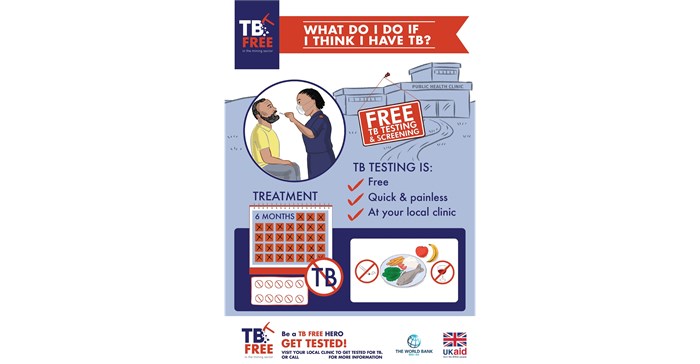TB social mobilisation campaign in southern Africa

The character of ‘Big Jim’ was used to convey the message. ‘Big Jim’ is a miner, a husband and a father who has survived TB. ‘Big Jim’ is an animated composite of ‘every miner.’ He is the sum of the diversity in country, culture, literacy, language and age group, which defines the mineworker and ex-mineworker who crosses provinces and borders to work on mines in South Africa.
But he is also a symbol of a sad truth that binds hundreds of thousands of miners together: the high risk of being infected by and perhaps, dying from TB and other communicable diseases.
The campaign is currently underway in South Africa and three labour-sending countries: Lesotho, Mozambique and Swaziland. In the wake of last week’s World Health Organisation’s (WHO) Global Tuberculosis Report, which again marked TB as one of the 10 leading causes of death in the world, the challenge of a social mobilisation effort is not simply to inform, but to ignite responsiveness in high-risk communities.
The aim is to foster social change and support processes in the community that sparks conversations to shift social values or eliminate barriers to new behaviour. The dialogue-based mechanisms are supported by facilitators who engage with high–burden communities on a daily basis. It is backed by information and education materials.
World Health Organisation’s Global Tuberculosis Report again marked TB as one of the 10 leading causes of death in the world…
Feedback from country coordinators and fieldworkers at grassroots indicates that the need is greatest amongst ex-miners workers; who have additional barriers to receiving treatment, including distances in rural areas, lack of transport and communication, less education on TB awareness and greater financial strain. There is also a huge need to help communities further understand compensation claims procedures.
Implementation is in concert with interventions already taking place such as mobile clinics currently being conducted by the Medical Bureau for Occupational Diseases (MBOD) and the work being conducted by NGOs on behalf of the World Bank to find better ways to track and trace ex-mineworkers to assist with compensation. It also dovetails with and extends the campaigns run for workers by mining houses.
TB rates within the gold mining workforce are estimated at 2,500-3,000 cases per 100,000 individuals. This incidence is 10 times higher than the World Health Organization (WHO) threshold for a health emergency, and is also 2.5 to 3 times the incidence rate in the general population. There are a range of factors that keep people in high-burden TB communities in a cycle of disease. This includes issues of poor health services infrastructure through to fear of stigmatisation, which reduces the numbers of people who seek and comply with treatment.
Social issues campaigns, especially for issues that are stigmatised can result in affected communities ‘switching off’ to messages. This campaign therefore includes a variety of platforms to support on-the-ground engagement. It includes visually represented messaging, sms campaigns and an animated video. Materials are produced in English, Sesotho, Zulu, Xhosa, SiSwati and Portuguese. The range of channels allows affected communities to engage with the message in a way most comfortable to them. It reduces barriers of literacy and relevance. Whilst localised wherever possible – messaging is also harmonised across the spectrum, so that the same message reaches multiple and diverse geographic areas, enabling broader community engagement. It establishes a standard for communications in relation to TB initiatives.



